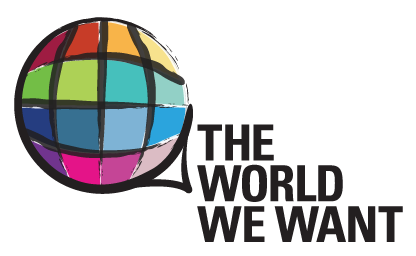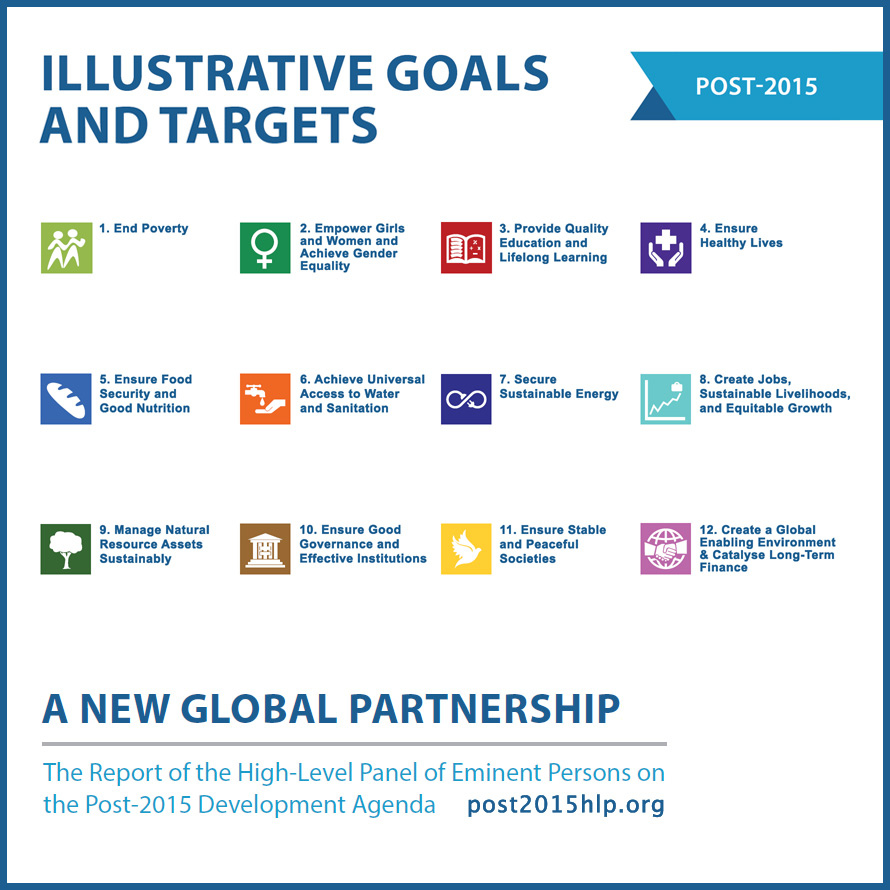
The Post-2015 Development Agenda has been on everyone’s mind in the last eight months in some form or the other. Some of us flirt with it, some of us ignore it, some of us engage with it and some of us sleep with it. The process was launched with the promise of a transformational agenda which would leave no one behind. Compared to the Millennium Development Goals (MDGs) which were crafted behind closed doors by a few, driven by the UN Secretary General Kofi Annan and the head of UNDP Mark Malloch Brown, and imposed on governments and NGOs alike; the post-2015 process promised full participation of all stakeholders – member states, NGOs, private sector, UN agencies – to help establish the agenda.
The story so far …
The process was sparked off when the 2010 High-Level Plenary Meeting of the General Assembly on the MDGs requested the Secretary-General to initiate thinking on a development agenda which will supersede the MDGs in 2015. In 2012, after the Rio Conference, member states launched the process to develop a set of Sustainable Development Goals (SDGs), which will build upon the Millennium Development Goals and converge with the Post-2015 Development Agenda. An Open Working Group (OWG) on Sustainable Development was established, designated by the 5 United Nations Regional Groups and 30 Member States. A series of 13 sessions were held starting March 2013 until July 2014, over a 17 month duration and the proposal for Sustainable Development Goals was developed. A set of 17 goals and 169 targets were proposed for consideration. The inputs were synthesized into a report which would serve as a basis for the intergovernmental negotiations in the lead up to the Summit in 2015.
Some early successes for the SRHR movement out of this OWG process include the inclusion of targets on maternal mortality reduction, ensuring universal access to sexual and reproductive health services, ending child/ early/ forced marriages and violence and harmful practices, and ensuring reproductive rights. Of course, for us, edgy sexual and reproductive rights activists, these targets are simply no-brainers. But in the inter-governmental negotiations where language on SRHR and women’s rights are used as trading chips for language on economics and politics, these could be seen as significant gains, especially as the original MDGs had nothing more than maternal mortality reduction.
After the OWG sessions and report, the President of the General Assembly appointed two co-facilitators, one from Kenya and the other from Ireland, to lead those informal consultations and inter-governmental negotiations which ran from January to July 2015. At the same time, the Financing for Development consultations, a follow-up of the Monterrey and Doha conferences, were being held across the corridor. Though this was not part and parcel of the original Post-2015 Development Agenda process, somehow these two became intertwined and the fate of one influenced the other.
The Post-2015 process also identified the need to have an accountability avenue for the implementation of the SDGs, and formed the High-level Political Forum on Sustainable Development to provide follow-up and reviews of the implementation of sustainable development commitments and the Post-2015 Development Agenda and the Sustainable Development Goals (SDGs).
Additionally, the process included the need for having the United Nations Statistical Commission (UNSC) provide necessary statistical support for the elaboration of the Post-2015 Development Agenda, and the Commission formed the Inter-agency and Expert Group on SDG Indicators (IAEG-SDGs), which would include the national statistical offices (NSO), and as observers the regional, international organisations and agencies, and they will be working on the indicator framework. This indicator framework would be potentially endorsed at the 47th session of the Statistical Commission in 2016.

What’s in it for us?
On the whole, the new goals and targets do provide us with more points of entry on the issues of bodily rights, bodily integrity, and bodily autonomy which are critical concepts for our movement, and which we need to educate our governments about.
However we need to be cognisant that the world has become a lot more complex than it was in 1994 and 1995. Today the people at the table not only include governments, UN agencies and NGOs but also people representing the private sector and a well organised religious right. Both these groups have a strong presence because they understand fully that influencing inter-governmental decisions will bring enormous profit to corporations and add currency to out-dated religious ideas. Trade and finance interests of member states cloud development discussions to the detriment of issues of social development. Bilateral agreements on many issues of national interests have reduced the agency of the inter-governmental system and the binding nature of resolutions and agreements coming from the UN.
Global crises – conflicts between states and between peoples, disasters, financial and governance Catch-22 – still remain unresolved. And there has been a glaring lack of political leadership – at the national and the global levels – to manage these crises and provide adequate and timely remedial measures.
And of course we need to question ourselves critically: Will this Post-2015 Development Agenda be able to be the catalyst for the change we wish to see in our countries and our communities? Even if we pare down our expectations to the bare minimum: will this development agenda enable our governments to think about and tackle the issues we face with the perspectives and principles we would desire them to? Are the concepts of equality, human rights, non-discrimination, fundamental freedoms and liberties upheld in a manner that states cannot continue to ignore and side-step in the name of development?
We can and should engage with the post-2015 development framework and the follow-up processes delineated above, but a clear understanding of what we can use the SDGs for and what we can’t use them for, will enable us to be more strategic and creative in our advocacy endeavours.
More importantly we need to realize that any global agenda, strategy or framework which does not address gender, power imbalances (which are the root cause of social marginalisation) will only bring us limited results. The reticence and lethargy of governments to discuss and capture marginalization due to gender and sexuality, amidst a host of other politically difficult issues such as migration, religious conservatism and fundamentalism, ethnic conflict, and young people demonstrates either the inability or the disinterest of member states and the UN to find the much needed solutions for the inequalities we see in the world.
For all of us who work at the intersections of gender, women’s rights, and sexual and reproductive rights, defining and maintaining international, universal principles and standards, with regard to our issues is fundamental. These standards are derived from the international conventions signed onto by our governments such as the CEDAW, the CRC, ICESR and the ICCPR and the major UN conferences such as the ICPD and the FWCW. Holding governments accountable to these standards, has been a main strategy to reduce inequalities and underlying factors which cause social marginalisation. Utilising human rights mechanisms and standards has also been a main strategy for checking power in all countries. In order to make governments accountable for delivering on the Post-2015 Agenda, maintaining these standards is essential, and the inclusion of these into the decisions and monitoring work of the High Level Political Forum is vital. Continued engagement, presence and participation in the human rights venues are also critical for the success of our agenda.
Hence, we have our work cut out for us for the next 15 years. We need to be able to form broad coalitions with peoples’ movements across sectors in order to check power more effectively and efficiently; and to try to ensure a redistribution of power in our societies. We need to be able to form a coalition of governments, NGOs and UN agencies which continue to champion and set universal, high standards and benchmarks for development and rights. While we can utilise the Post-2015 development framework to lead discussions, and continue to point out gaps in government implementation and achievements, it is evident that to create the #worldwewant, we may well have to roll up our sleeves and build it ourselves.